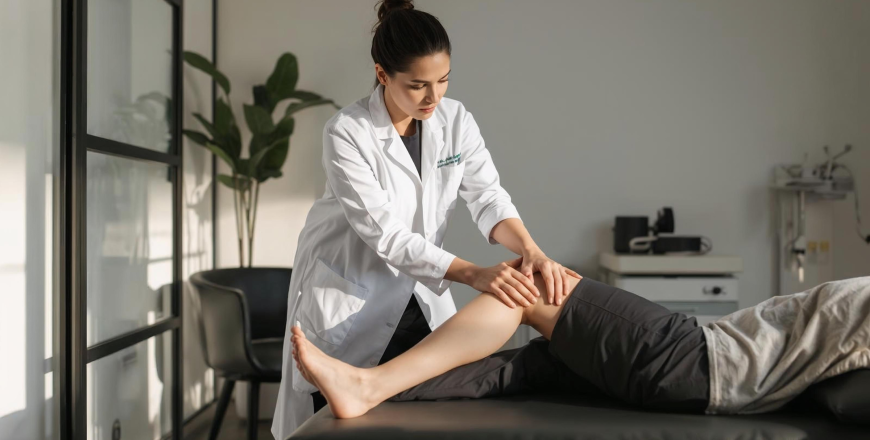Course Outline
Course Outline
-
Introduction
-
Overview of Total Knee Replacement (TKR)
-
Common post-operative complications and pain mechanisms
-
-
Physiology of Pain in Early TKR
-
Nociceptive and inflammatory processes
-
Role of swelling, stiffness, and neuromuscular inhibition
-
-
Muscle Activation in Early Rehabilitation
-
Quadriceps inhibition and its impact on pain
-
Early activation strategies (isometric, NMES, biofeedback)
-
Muscle recruitment patterns and functional restoration
-
-
Evidence-Based Effects of Muscle Activation on Pain
-
Current literature findings
-
Mechanisms: improved joint stability, decreased nociception, circulation benefits
-
-
Practical Applications for Clinical Practice
-
Early-stage activation protocols
-
Progression from isometric to functional exercises
-
Safety considerations and contraindications
-
-
Case Study & Clinical Scenarios
-
Application of muscle activation in post-TKR rehab
-
Monitoring patient outcomes and adjusting plans
-
Course Objectives
Course Objectives
By the end of this course, participants will be able to:
-
Describe the mechanisms of pain in the early stage of TKR.
-
Explain the relationship between quadriceps inhibition and post-operative pain.
-
Identify evidence-based muscle activation strategies that reduce pain after TKR.
-
Develop safe and progressive activation-based rehabilitation protocols.
-
Apply clinical reasoning to integrate muscle activation in individualized patient care.
Course Instructor







